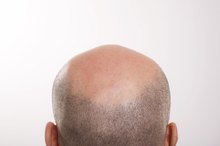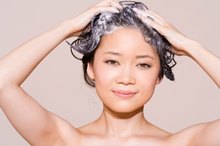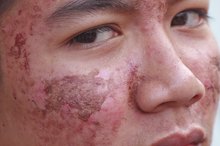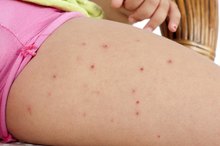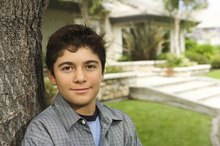Bald Patches in Children
Bald patches on your child’s scalp can for occur for several reasons. Schedule a thorough examination by your child’s doctor to determine your child’s diagnosis. Once your child’s doctor identifies the cause of a bald spot, she can recommend appropriate therapy to treat the problem.
Causes
Alopecia areata, an autoimmune skin disease, can cause bald patches on the head and on other parts of the body. Alopecia areata affects more than 4 million people in the United States and often begins in childhood, according to the National Alopecia Areata Foundation 1. Ringworm also can cause of bald spots on your child’s scalp. Ringworm is a fungal skin infection that causes a rash accompanied by hair loss if it occurs on the scalp.
- Alopecia areata, an autoimmune skin disease, can cause bald patches on the head and on other parts of the body.
Symptoms
The Baby is Pulling Out Her Hair
Learn More
Alopecia areata most commonly affects the scalp and begins with one or more small, coin-sized bare patches, according to the American Academy of Dermatology. The disease can also affect hair on the eyelashes and eyebrows. Itching or discomfort can occur before hair loss begins. Ringworm, meanwhile, may show up as raised, red patches on the skin of the scalp in the shape of a ring. These patches may be itchy and may contain blisters. The Directors of Health Promotion and Education website reports that hairs in the infected areas may become brittle and break off easily 2.
- Alopecia areata most commonly affects the scalp and begins with one or more small, coin-sized bare patches, according to the American Academy of Dermatology.
- Itching or discomfort can occur before hair loss begins.
Diagnosis
Your child’s doctor may be able to diagnose your child’s problem by examining his scalp. In some cases, a scalp biopsy may be needed to determine the cause of the problem. If your doctor suggests that your child has ringworm, he may use a special blue light that makes the infection more visible.
Treatment
Scalp Conditions That Cause Hair Loss
Learn More
There is no cure for alopecia areata, but doctors can prescribe medications that may help treat the disease. Anthralin cream or ointment and topical minoxidil may be recommended for hair regrowth, according to the National Alopecia Areata Foundation 1. Doctors may also treat alopecia areata with cortisone injections to encourage new hair growth. Hair loss caused by ringworm will stop if your child uses prescription anti-fungal topical medications or oral anti-fungal medications.
- There is no cure for alopecia areata, but doctors can prescribe medications that may help treat the disease.
Considerations
Bald spots may be the result of trichotillomania, a disorder that compels children to pull out their own hair. Stressful situations can cause children to increase the behavior, resulting in embarrassment if friends notice the bald spots. The American Academy of Child and Adolescent Psychiatry advises against punishing children for hair pulling, as punishment won’t stop the behavior and may lead to self-esteem problems. If your child suffers from trichotillomania, your doctor may suggest cognitive behavioral therapy or medication. Medication can be helpful in relieving symptoms of certain disorders that may make the problem worse, such as obsessive compulsive disorder, depression or anxiety.
- Bald spots may be the result of trichotillomania, a disorder that compels children to pull out their own hair.
- Medication can be helpful in relieving symptoms of certain disorders that may make the problem worse, such as obsessive compulsive disorder, depression or anxiety.
Related Articles
References
- National Alopecia Areata Foundation: What is Alopecia Areata?
- Directors of Health Promotion and Education: Ringworm
- Oxidative stress in alopecia areata: a case-control study, Bakry OA, Elshazly RM, Shoeib MA, Gooda A, American Journal of Clinical Dermatology, February 2015
- Alopecia Areata Increases the Risk of Stroke: a 3-year Follow-Up Study, Kang JH, Lin HC, Kao S, Tsai MC, Chung SD, Scientific Reports, June 2015
Writer Bio
Working at a humane society allowed Jill Leviticus to combine her business management experience with her love of animals. Leviticus has a journalism degree from Lock Haven University, has written for Nonprofit Management Report, Volunteer Management Report and Healthy Pet, and has worked in the healthcare field.

